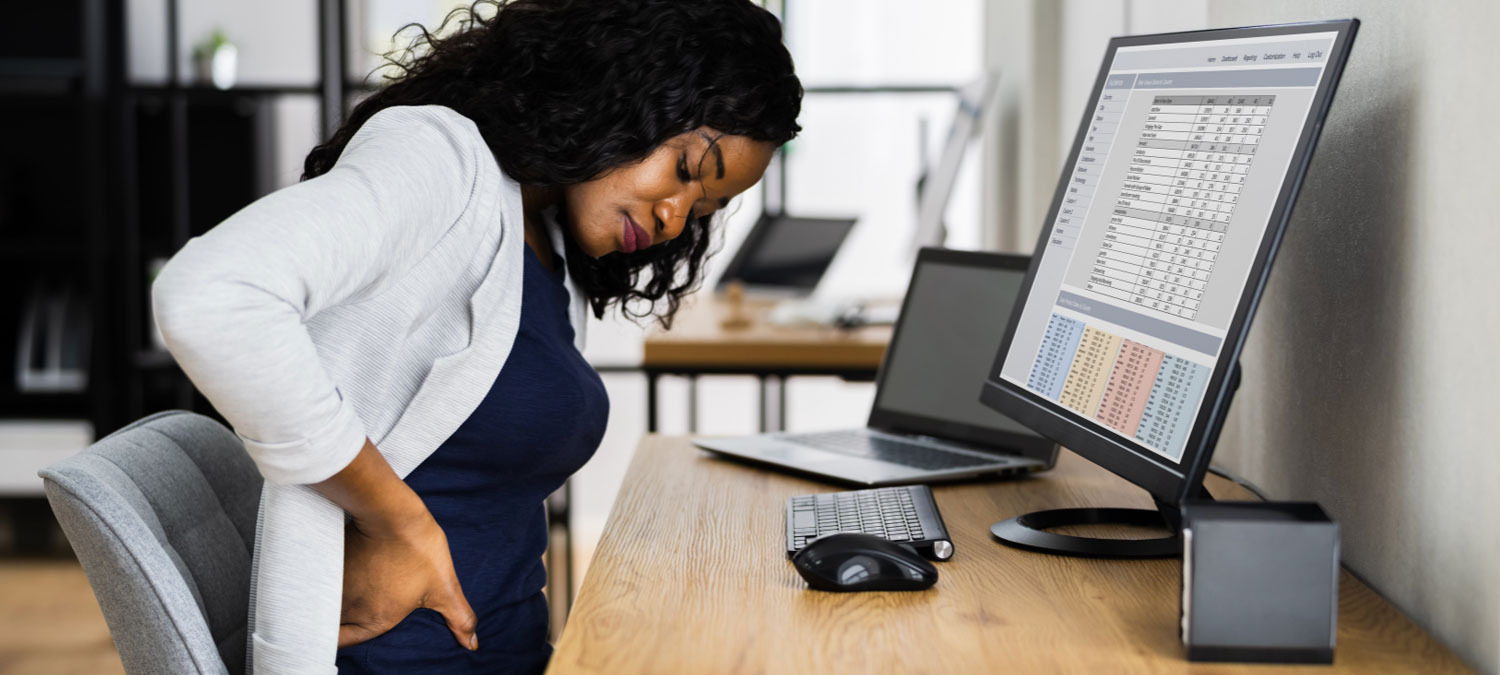Unsupported postures cause the loads on your spine to disperse incorrectly, weakening the tissues in your lower back. As a result, the intricate network of muscles, discs, and joints in your back tend to be pushed beyond their tolerable limit, causing pain. Common unsupported postural habits come from everyday activities that typically involves a combination of actions, such as walking, sitting, standing, bending, lifting, and lying down. Common habits that you may develop while performing these actions include:
• Slouching or sitting slumped on your office chair or couch.
• Lying on your stomach on the bed while working on a laptop/reading a book.
• Sitting on a bed and working on your laptop.
• Hunching forward while weeding your garden or washing dishes for a long time.
• Using your vacuum cleaner with one hand and long arm movements.
• Standing with the weight of your body concentrated on one leg.
• Walking in a hunched manner without supporting the head or the trunk.
• Lifting heavy objects off the floor by bending your back.
When you use incorrect posture, several areas of stress may develop within your muscle tissue, spinal joints (lumbar facets), and discs. These stresses may be relieved once the offending posture is corrected or may continue to accumulate, slowly weakening the affected structure.
Ask Yourself: Does the posture that I use increase the pain or decrease the pain?
Note: One of the more common postures that drives low back pain is flexion. A neutral spine
should be held in all aspects of training!
Follow these tips for supportive posture
- WALK TALL – poor posture can contribute to chronic back pain. While walking, it is important to look straight ahead and to keep your head balanced above your spine. Keep your spine straight and relax your shoulders. Make sure to land on your heel and then gently roll forward to push off the front of your foot. With each step, a gentle spinal rotation must be achieved by reaching the opposite arm forward.
- LIFT CAREFULLY – common everyday activities like lifting your groceries or picking up your child can cause low back problems. It is essential to lift correctly in order to avoid injury. To lift a heavy object from the floor, squat down in front of the object by keeping a straight back and bending your knees. Hold the object close to your chest while you straighten your knees to stand up.
- SIT WITH SUPPORT AND GET UP EVERY HOUR – while sitting and working on an office chair, keep your back flush against your chair, your head over your spine, your shoulders rolled back, and shoulder blades down. Bend your arms at a 75 to 90-degree angle at the elbows. Your legs must be hip-distance apart with both feet flat on the floor. If you are unable to reach the floor, use a footrest. Try placing a small pillow or rolled-up towel to support your lower back and maintain the lumbar curve. Aim to get up every hour and walk a short distance to relieve pressure off your discs.
If you have questions about this blog or would like to speak to a Personal Trainer regarding exercises to strengthen your lower back please visit the Personal Training Desk or fill out our Personal Training Enquiry Form.
